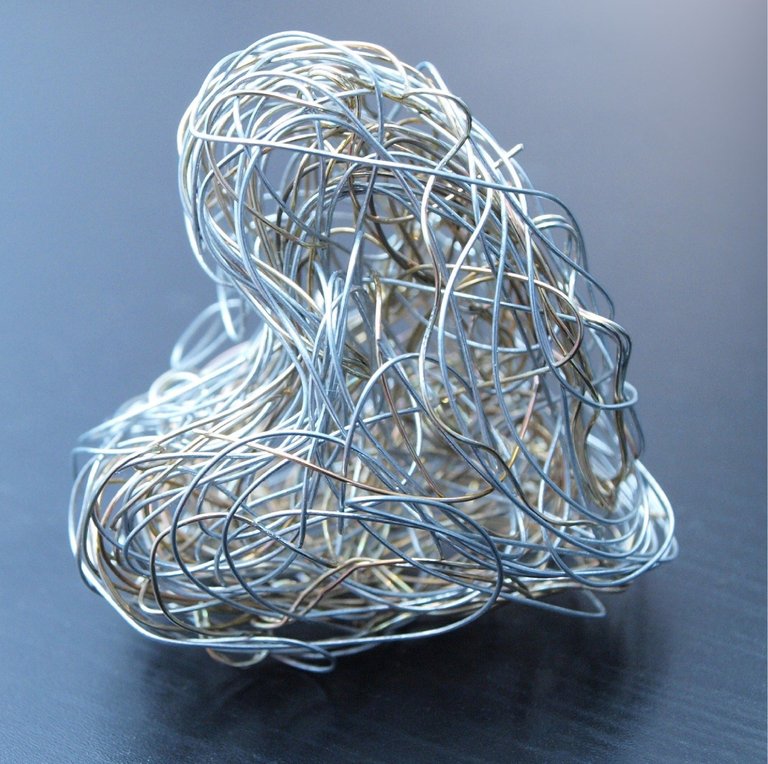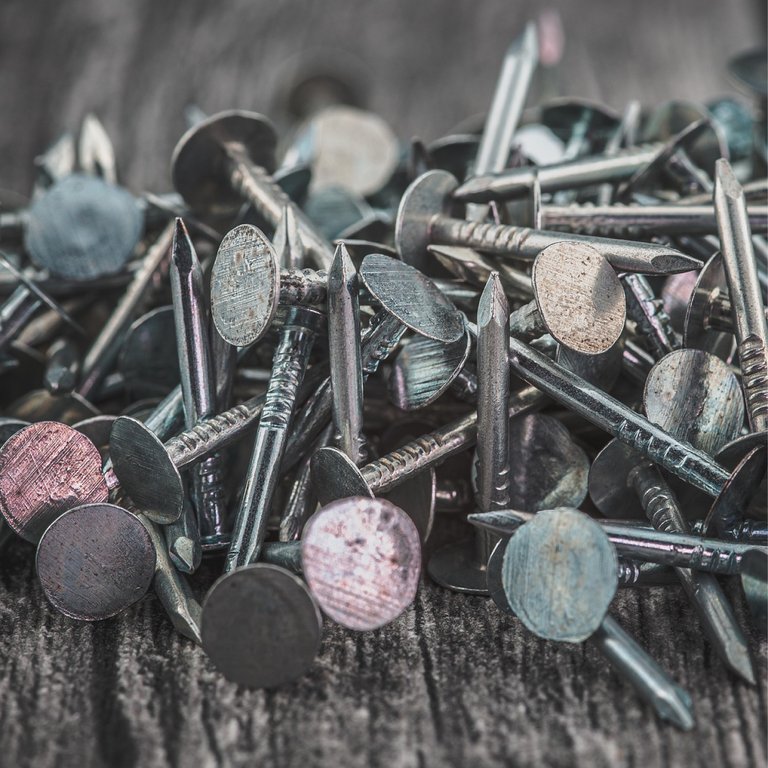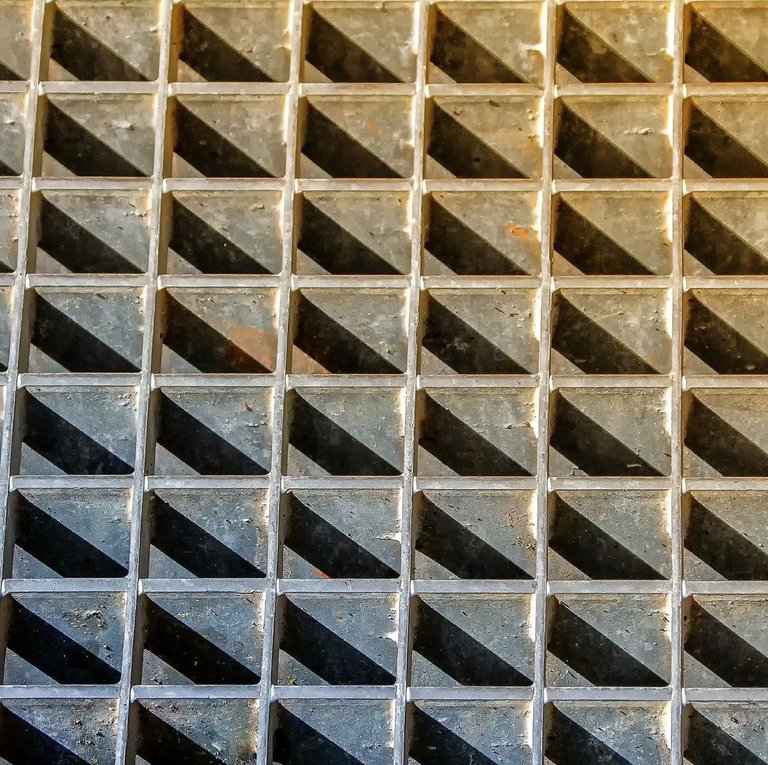Hello everybody,
Today I would like to resume a series about chemistry that I have abandoned for some time: the discussion of some of the elements of the periodic table. In particular, I would like to talk about zinc.
Introduction
Zinc is the chemical element with the symbol Zn and atomic number 30. We find it in two possible states of oxidation: 0, +2.
It is a reducing metal and dissolves in all acids with hydrogen development according to the reaction:
Zn + 2 H+ --> Zn2+ + H2
In water, the metal is subjected to the phenomenon of passivation with the formation of insoluble hydroxide:
Zn + 2 H2O --> Zn2+ + 2 OH- + H2 --> Zn(OH)2
It is an amphoteric element, that is, it can have both acidic and basic characteristics.
Biological interactions
Zinc is an essential trace element, which means that its deficiency results in functional disorders and its contribution to physiological dosages prevents or heals these symptoms. The daily requirement is 15 mg.
We can find zinc in:
- Milk;
- Fish;
- Yolk;
- Oysters;
- Artichokes;
- Spinach.
In the body there are about 200 zinc-dependent enzymes, including:
- Carbon dioxide: Catalyzes the rapid interconversion of carbon dioxide and water into carbonic acid, protons and bicarbonate ions
- Alcohol dehydrogenase: Metabolizes ethanol;
- Alkaline phosphatase: Hydrolyzes organic phosphoric esters;
- ACE conversion enzyme.
Zinc deficiency is visibly associated with delays in body and bone growth.
The toxic effects per os are not relevant thanks to the low speed of absorption, but possibly they can be irritating on the gastrointestinal mucous membranes with emetic effect.
By injection it is toxic to the CNS and can cause paralysis.
Carcinogenic and teratogenic effects have also been reported.
Compounds of pharmaceutical interest
There are numerous compounds of pharmaceutical interest that contain zinc:
- Oxide: Used in dermatology in the form of ointment for its antimicrobial properties (due to the ability to react with the polar groups of enzymatic proteins), absorbent and refreshing;
- Chloride: The main use is in the preparation of pastes for dental fillings. It can also be used in cases of zinc deficiency and as an integral part of insulin formulas to slow down the action of the hormone and to stabilize it;
- Sulphate: In the form of diluted solutions, it is used as an ophthalmic antiseptic. There is a mixture of zinc sulphate and copper sulphate which is called "Dalibur water" and has antiseptic properties;
- Stearate: It is a lubricating excipient very useful in solid pharmaceutical forms.
Analytical reactions
Zinc recognition is based on the following reactions:
- At pH 8-10 alkaline hydroxides precipitate the white zinc hydroxide:
Zn 2+ + 2 OH- --> Zn(OH)2
The hydroxide dissolves in an excessively basic environment (about pH 13), as it is complex with tetrahydroxyzincate [Zn(OH)4]2-. - In neutral or weakly acidic solution with sulphide, the precipitation of white zinc sulphide is seen:
Zn2+ + S2- --> ZnS
This precipitate is soluble in diluted HCl by weak H2S formation.
I hope this post has been interesting. You can find more information on the elements of the periodic table in my previous posts: Iron, Alluminium, Copper and Silver!
See you next time,
Delilha
ITA
Ciao a tutti,
Oggi mi piacerebbe riprendere una rubrica sulla chimica che ho abbandonato per un po’ di tempo: la trattazione di alcuni degli elementi della tavola periodica. In modo particolare, mi piacerebbe parlare dello zinco.
Introduzione
Lo zinco è l'elemento della tavola periodica che ha simbolo Zn e numero atomico 30. Lo troviamo in due possibili stati di ossidazione: 0, +2.
Si tratta di un metallo riducente e si scioglie in tutti gli acidi con sviluppo di idrogeno secondo la reazione:
Zn + 2 H+ --> Zn2+ + H2
In acqua, il metallo è sottoposto al fenomeno della passivazione con formazione dell’idrossido insolubile:
Zn + 2 H2O --> Zn2+ + 2 OH- + H2 --> Zn(OH)2
Si tratta di un elemento anfotero, ovvero può manifestare caratteristiche sia acide che basiche.
Interazioni biologiche
Lo zinco è un oligoelemento essenziale, ciò significa che la sua carenza si traduce in delle turbe funzionali e il suo apporto a dosaggi fisiologici previene o guarisce questi sintomi. Il fabbisogno giornaliero è di 15 mg.
Possiamo trovare lo zinco in:
- Latte;
- Pesce;
- Tuorlo;
- Ostriche;
- Carciofi;
- Spinaci.
Nell’organismo ci sono circa 200 enzimi zinco-dipendenti, tra cui:
- Anidrasi carbonica: Catalizza la rapida interconversione di anidride carbonica e acqua in acido carbonico, protoni e ioni bicarbonato
- Alcol deidrogenasi: Metabolizza dell’etanolo;
- Fosfatasi alcalina: Idrolizza gli esteri fosforici organici;
- Enzima di conversione ACE.
La carenza di zinco è visibilmente associata a ritardi nella crescita corporea e ossea.
Gli effetti tossici per os non sono rilevanti grazie alla bassa velocità di assorbimento, ma eventualmente posso risultare irritanti sulle mucose gastrointestinali con effetto emetico.
Per iniezione è tossico verso il SNC è può provocare paralisi.
Si sono riscontrati anche effetti cancerogeni e teratogeni.
Composti di interesse farmaceutico
Numerosi sono i composti di interesse farmaceutico che contengono lo zinco:
- Ossido: Impiegato in dermatologia sotto forma di pomata per le proprietà antimicrobiche (dovute alla capacità di reagire con i gruppi polari delle proteine enzimatiche), assorbenti e rinfrescanti;
- Cloruro: Il principale utilizzo è nella preparazione di paste per otturazioni dentali. Può essere anche impiegato nei casi di carenza di zinco e come integrante nelle formule di insulina per rallentare l’azione dell’ormone e per stabilizzarlo;
- Solfato: Sotto forma di soluzioni diluite, è utilizzato come antisettico oftalmico. Esiste una miscela di zinco solfato e rame solfato che viene chiamata acqua di Dalibur e ha proprietà antisettiche;
- Stearato: È un eccipiente lubrificante molto utile nelle forme farmaceutiche solide.
Reazioni analitiche
Per il riconoscimento dello zinco ci si può basare sulle seguenti reazioni:
- A pH 8-10 gli idrossidi alcalini precipitano l’idrossido di zinco di colore bianco:
Zn2+ + 2 OH- --> Zn(OH)2
L’idrossido si scioglie in ambiente eccessivamente basico (circa pH 13), in quanto si complessa a tetraidrossizincato [Zn(OH)4]2-. - In soluzione neutra o debolmente acida con solfuro, si vede la precipitazione del solfuro di zinco di colore bianco:
Zn2+ + S2- --> ZnS
Questo precipitato è solubile in HCl diluito per formazione di H2S debole.
Spero che questo post sia stato interessante. Potete trovare altre informazioni sugli elementi della tavola periodica in miei precedenti post: Ferro, Alluminio, Rame e Argento!
Alla prossima,
Delilha
Sources - Fonti: European Pharmacopoeia





Fantastico, brava!
Grazie :)
Link all'articolo sulla Pagina Facebook di Hive Italia
Grazie :)
pensa che io conoscevo solo il bianco di zinco un bel bianco dei colori ad olio. Ottimo articolo!
!discovery 40
Grazie mille :)
This post was shared and voted inside the discord by the curators team of discovery-it
Join our community! hive-193212
Discovery-it is also a Witness, vote for us here
This post was shared in the Curation Collective Discord community for curators, and upvoted and reblogged by the @c-squared community account after manual review.
@c-squared runs a community witness. Please consider using one of your witness votes on us here
Congratulations @delilhavores! You have completed the following achievement on the Hive blockchain and have been rewarded with new badge(s) :
You can view your badges on your board and compare to others on the Ranking
If you no longer want to receive notifications, reply to this comment with the word
STOPSupport the HiveBuzz project. Vote for our proposal!